What is VPD (Vapor Pressure Deficit) and How To Calculate It

- 1. What is transpiration?
- 2. What is vpd?
- 3. How vpd affects your cannabis plants
- 3. a. Stomata opening
- 3. b. Co2 uptake
- 3. c. Transpiration
- 3. d. Nutrient absorption at the roots
- 3. e. Plant stress
- 4. How to calculate vpd - vpd chart
- 5. Ideal vpd for the stages of plant growth
- 5. a. Ideal vpd for clones
- 5. b. Ideal vpd for the vegetative stage
- 5. c. Ideal vpd for the flowering stage
- 6. How to change the vpd
- 6. a. Temperature
- 6. b. Humidity
- 6. c. Light intensity
- 7. Vapor pressure deficit - faqs
- 8. In conclusion
When growing cannabis seeds indoors you are basically controlling every single aspect of the growing conditions, such as the relative humidity and temperature. These elements may end up affecting how your plants perform their basic processes and that’s where VPD comes in. Vapor pressure deficit is a technique used to adjust the temperature and humidity to optimal values, boosting your plants' performance, and achieving maximum plant growth.
There is a common misconception floating around that the transpiration rate of an indoor cannabis crop (or any crop for that matter) can have a direct effect on the relative humidity of the grow space. It is actually the opposite way around - once we can fully control the environmental conditions of our growing area, we are able to take control of the crop’s transpiration rate. What we can confidently say is that plant transpiration has a direct impact on plant growth, and VPD has a direct impact on a plant’s transpiration rate.
In a perfect world, we would be able to keep the temperature and humidity of our grow space accurately stable regardless of what actually takes place inside the room. Unfortunately, this is not a perfect world, but there are a bunch of systems on the market that help with automating the control of the environment of a grow room. But, the questions really are what exactly is transpiration, what is VPD, and how does it affect the growth and quality of a cannabis crop.
1. What is Transpiration?
The movement of water throughout a cannabis plant’s system is determined by the rate of water evaporation on the surface of the leaves. This moisture evaporation is known as transpiration. The three main driving factors that influence transpiration rates are RH (relative humidity), VPD (vapor pressure deficit), and the ambient room temperature at the level of the canopy (and to a certain extent above). Water ( and all the nutrients contained in it) is moved up through the plant through first the root system, and then up through the xylem.
Xylem is the plant vascular tissue, and it is made up of specialized, water-conducting cells known as tracheary elements. The xylem then transports the water into the leaf cells. Once safely located in the leaves, it slowly but surely transpired through the leaf pores, also known as stomata. This process is a necessary process in the metabolism of cannabis plants as the stomata opening also allows for the release of the photosynthesis waste products, the main by-product being CO2. Up to +97% of all water the plant intakes through its roots is lost again through either transpiration or another process known as guttation, which is when plants excrete full water droplets.
2. What Is VPD?
VPD means vapor pressure deficit and refers to the amount of water in the form of vapor in the air. As you may know, air is made up of many gases including (approximately) 78% nitrogen, 21% oxygen, and 1% other gases; one of these other gases that compose air is water vapor, known as vapor pressure.
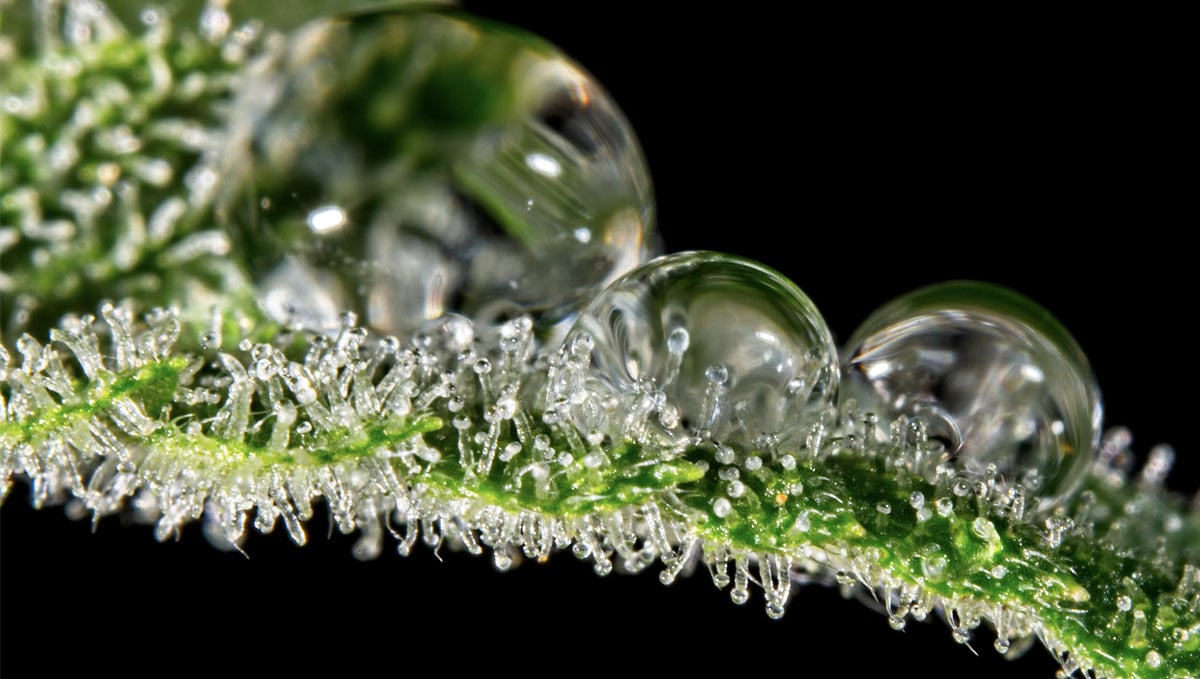
Air can only hold a certain amount of water vapor at a certain temperature before it starts turning back into liquid form (in the form of rain for example), this maximum amount of water vapor that air can hold is called SVP aka saturation vapor pressure, and, as the air gets hotter, that amount increases (so the SVP increases). When the air cools down the saturation vapor pressure decreases, this means that the air cannot hold as much water vapor as before. That’s why, for example, there is dew all over after a cool morning; because the temperature cools down the air and it can’t hold as much water vapor as it was holding.
3. How VPD Affects Your Cannabis Plants
If you were looking for this article it probably means that you already know that VPD is important when growing indoors. Because you have control over the growing conditions, you might be able to provide almost perfect conditions for your plants to grow in and get overall better results but can also have bad consequences if not used properly... so how does VPD influence cannabis plants?
Stomata opening
As VPD increases, the plant’s stomata get smaller because they’re trying to reduce water loss. This means that they won’t die from dehydration due to excessive transpiration but photosynthesis may be slower.
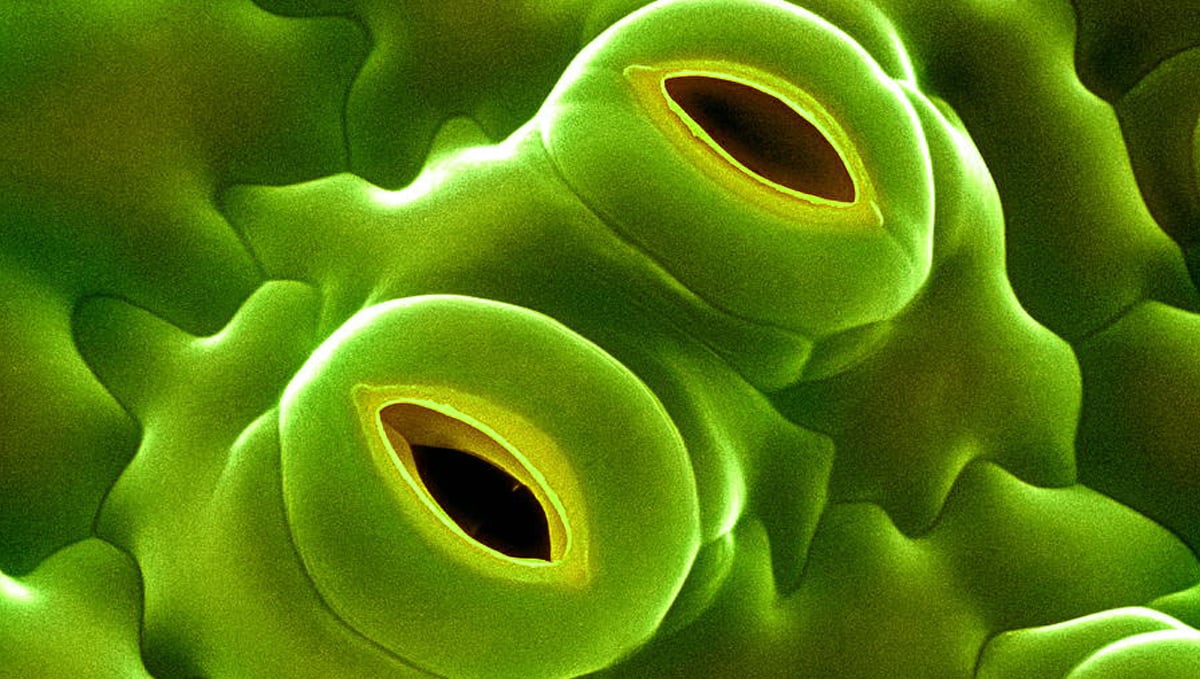
CO2 uptake
As the stomata get smaller they absorb less CO2. Whereas if VPD decreases and stomata open, they absorb more CO2. This process allows you to control how much CO2 your plants get for proper photosynthesis.
Transpiration
Based on the properties of water, it tends to diffuse from areas with a high concentration of moisture to areas with a low concentration. So as VPD increases, your plants will be able to transpire faster due to the difference in vapor pressure between the leaf and the air.
Nutrient absorption at the roots
Additionally, as the VPD increases and transpiration increases, the roots will be able to absorb more nutrients.
Plant stress
On the other hand, as the VPD increases, there are more forces acting on your whole plant (from the roots to the leaves) so your plant will experience more stress. As you can see, VPD can also have bad consequences if not used properly. It’s a powerful tool that should be adjusted for every stage of plant growth. You might be thinking that you’re improving your harvest but in fact, it might not be the deal.
4. How To Calculate VPD - VPD Chart
Calculating the VPD in your grow space is quite simple, you just need to know the temperature, relative humidity, and the saturated vapor pressure (SVP) for the temperature so here’s a VPD chart with the relation between temperature and SVP.
| Temperature (°C) / SVP | |||||||||
|---|---|---|---|---|---|---|---|---|---|
| Temp | SVP | Temp | SVP | Temp | SVP | Temp | SVP | Temp | SVP |
| 1 °C | 657 | 7 °C | 1002 | 13 °C | 1497 | 19 °C | 2197 | 25 °C | 3167 |
| 2°C | 706 | 8 °C | 1073 | 14 °C | 1598 | 20 °C | 2338 | 26 °C | 3361 |
| 3°C | 758 | 9 °C | 1148 | 15 °C | 1705 | 21 °C | 2486 | 27 °C | 3565 |
| 4°C | 813 | 10 °C | 1228 | 16 °C | 1818 | 22 °C | 2643 | 28 °C | 3779 |
| 5°C | 872 | 11 °C | 1312 | 17 °C | 1937 | 23 °C | 2809 | 29 °C | 4005 |
| 6 °C | 935 | 12°C | 1402 | 18 °C | 2064 | 24 °C | 2983 | 30 °C | 4242 |
Once you’ve gathered the information you need, you need to apply it in the following formula:
VPD= ((100-RH) ÷ 100) * SVP
For example, if the temperature in your grow room is 26°C you’ll have to look for the SVP in the table so for 26°C the SVP is 3361. Now that you have the saturated vapor pressure value you just need the relative humidity which in this example will be 65%, so now it’s just a matter of doing the math.
VPD= ((100-65) ÷ 100) * SVP
VPD= (35/100) * 3361
VPD= 0.35 * 3361
VPD= 1176.35 Pascals
Now that you have the value in Pascals you have to convert it to kilopascals, luckily it’s super simple, it’s just a matter of dividing it by 1000, so:
1176.35 Pascals ÷ 1000 ≈ 1.18 kilopascals
5. Ideal VPD For The Stages Of Plant Growth
So now that you know how to calculate the VPD and how it can affect your plants, it’s time to know the ideal VPD. In general, the ideal VPD is between 0.5-1.4kPa (5-14 hPa). As you may already know, cannabis plants have different stages of plant growth so to get the perfect plant growth it’s essential you adjust the conditions to get the best VPD for each stage.
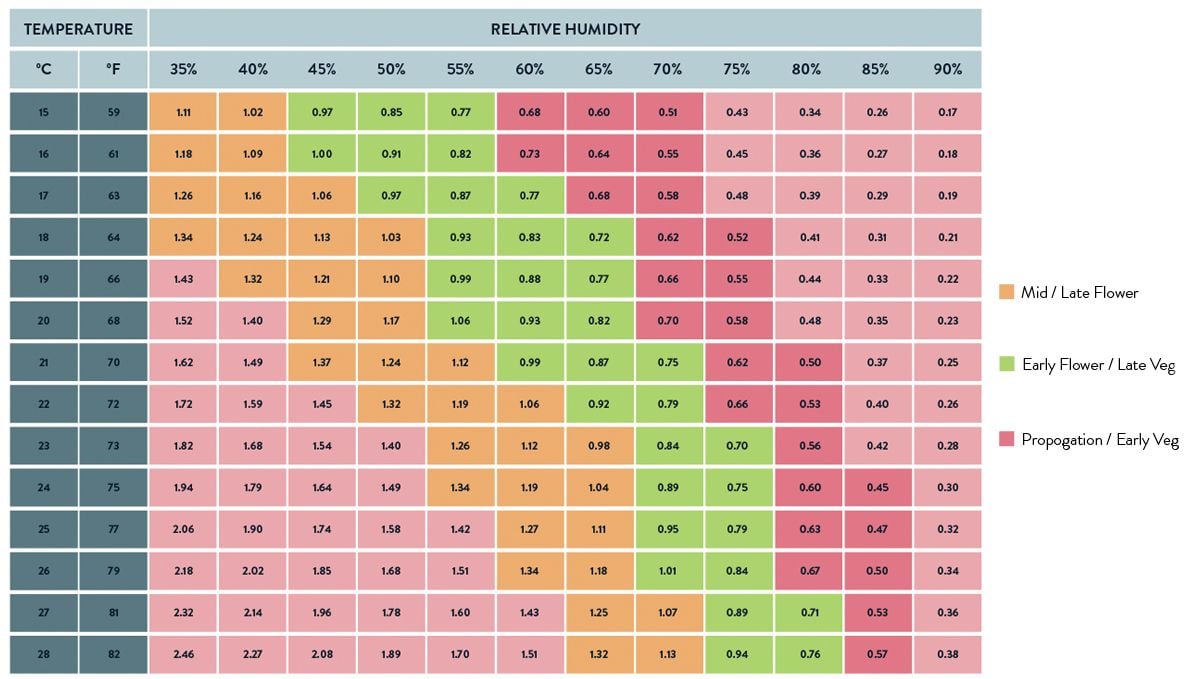
Have in mind that it’s highly recommended to test the conditions before applying it to your entire grow room to avoid problems and this VPD chart has been modified to fit temperatures of up to 28 °C. You can look for the complete VPD chart online.
In this VPD chart, light pink represents less-than-ideal values, dark pink optimal values for Propagation/Early veg, green optimal values for Late veg/Early flower, and orange optimal values for Mid/Late flower.
Ideal VPD For Clones
Due to clones being baby plants they cannot handle a lot of stress because they still haven’t fully developed their roots so you should aim for high humidity and a VPD closer to the lower end which would be as close as 0.5 - 0.7 kPa as possible.
Ideal VPD For The Vegetative Stage
In the vegetative stage, your cannabis plants should be bigger and sturdier so you can reduce the humidity a little bit to increase the VPD. By doing this you’ll be also increasing water and nutrient absorption, just make sure you don’t increase the VPD too much because the stomata will close and your plants will absorb less CO2 which is super important during the vegetative stage.
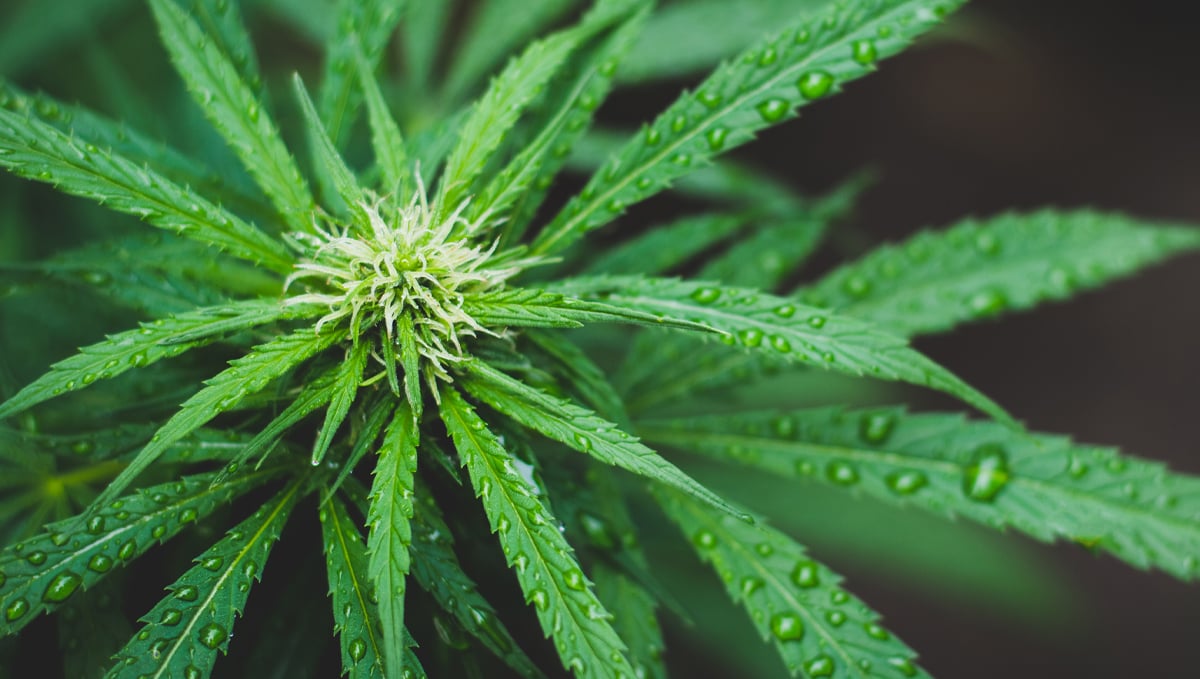
This happens because it’s one of the main ingredients for the compounds that make the structural parts of your plants, so the ideal VPD for the vegetative stage is around 0.7 - 1.0kPa.
Ideal VPD For The Flowering Stage
Once your plants have reached the flowering stage, they are strong enough to withstand a higher VPD but the flowers are quite sensitive so you need to avoid high humidity while still increasing the VPD, so the ideal VPD for the flowering stage should be around 1.0-1.4kPa.
6. How To Change The VPD
There are several ways to change the VPD, this can be done by changing:
- Temperature;
- Humidity
- Or light intensity.
So here are a couple of ways you can do it easily!
Temperature
Increase VPD: Running a heater or reducing the AC results in an increase of the VPD because the air heats up and can hold more water vapor.
Decrease VPD: Running the AC results in a decrease of the VPD because the air cools down and won’t be able to hold as much water vapor.
Humidity
Increase VPD: Running a humidifier decreases the VPD because the amount of water vapor in the air has increased.
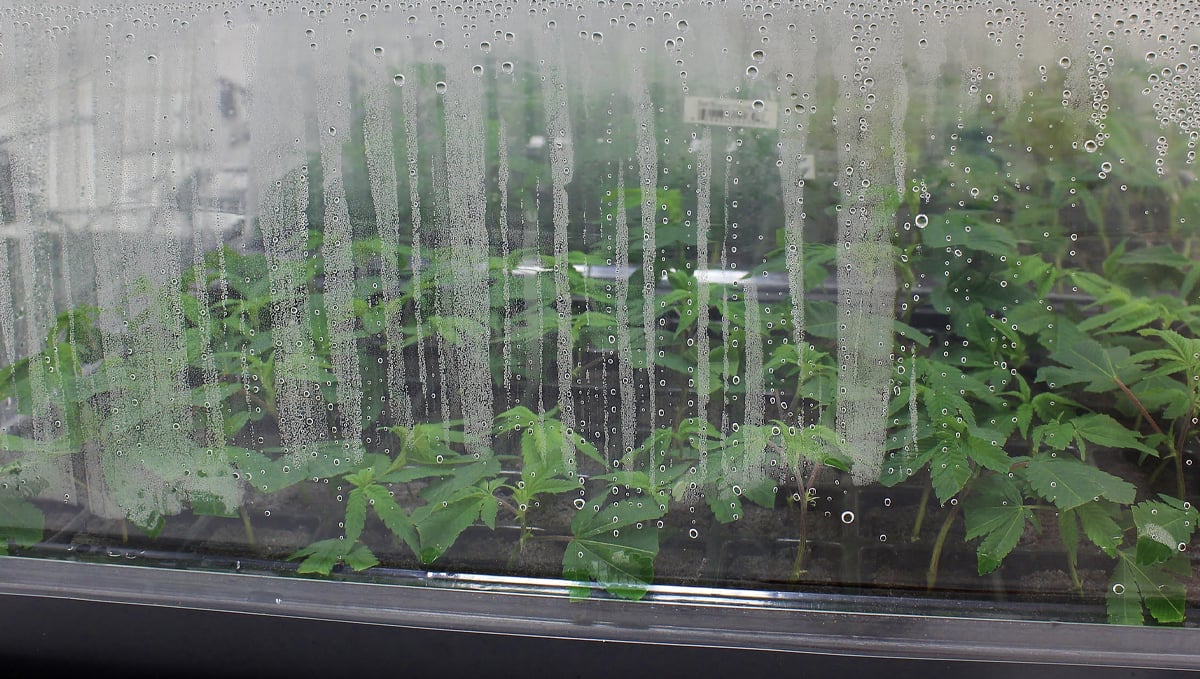
Decrease VPD: Running a dehumidifier increases the VPD because the amount of water vapor in the air has increased.
Light Intensity
Increase VPD: Increasing the intensity either by lowering the lights or adding more lights results in an increase of the leaf temperature, thus increasing VPD.
Decrease VPD: Decreasing the light intensity either by moving the lights further or removing light fixtures results in a decrease of leaf temperatures, thus decreasing the VPD.
7. Vapor Pressure Deficit - FAQs
So, there you have it. Everything there is to know about VPD, and how it affects your plants. But no matter how thorough and in-depth we look at a particular subject, there will always be growers with further questions. So let's quickly run through the most common queries regarding VPD to wrap things up.
How do VPD and relative humidity differ?
VPD is the difference between a plant's vapor pressure and the air's vapor pressure. Relative humidity, on the other hand, is simply a measure of the amount of water vapor present in the air relative to the maximum it can hold.
Do home growers really have to worry about VPD?
That really depends on what your desired outcome is. If you are looking to maximize the quality and yield of your crop, then the answer is yes. If you are an indoor gardener who simply wants to keep your plants healthy, then you may not need to make any adjustments to your environment. Keep in mind that VPD is a pretty advanced factor to be worrying about. If you are at the start of your cannabis cultivation adventure then there are many more important things to be focusing on. Focus on getting the temperature and humidity levels in check before you start complicating things.
What is the optimal VPD for my grow room?
This will depend on the particular plants you are growing, as different cultivars will have slightly different preferences. But, when looking at cannabis generally, and how VPD relates to growth - the optimal VPD for most plants is between 0.5 and 0.9 kPa during vegetative growth, with it slowly raising up to 1.2 to 1.6 kPa by the end of the lifecycle.
Are there any other factors that affect VPD apart from temperature and relative humidity?
Yes, there are. There is actually a super wide range of environmental and climatic factors that can Altitude, barometric pressure, as well as the type/amount of fertilizer can all have an impact on VPD, and should all be taken into consideration when setting up your grow room.
Is there a way to measure VPD in my grow room?
Yes, there is. There is a whole range of products available on the market that allow you to measure VPD in your grow room without hassle. By investing in one of these products, you can get an accurate reading of VPD in real-time, and adjust your other environmental factors accordingly. The best VPD measuring tool available to home growers on a budget is the Bluelab Guardian Monitor. This device measures temperature, humidity, and VPD all at once, giving you a comprehensive overview of the environment in your growing area.
What problems can an incorrect VPD cause for my plants?
If the VPD in your grow room is too low, then your plants can suffer from nutrient deficiency due to over-saturation of the environment. If the VPD is too high, then your plants will suffer from dehydration and an inability to absorb nutrients. Both of these scenarios can lead to poor growth quality and stunted yields. By keeping an eye on the VPD in your grow room, you can ensure that your plants are in optimum condition for growth and development.
How often should I measure VPD?
You should aim to check the VPD readings in your grow room at least once a week. Regular monitoring of the environment is essential for achieving consistent and high-quality yields. But remember, there are many other factors that are more important to keep in check before you start focusing on VPD. Get all the main things right, and your VPD should fall into an acceptable range.
8. In Conclusion
The Vapour pressure deficit may seem only suited for professional growers but everyone can do it as long as you have the proper equipment. This is the best way to provide perfect conditions for your plants to grow in, resulting in healthier plants and bigger yields.
If you have any tips that will help beginner growers take their grow cycles to the next level, feel free to leave a comment in the comment section below!
EXTERNAL REFERENCES
- Plant responses to rising vapor pressure deficit. - Grossiord, C. & Buckley, T.N. & Cernusak, L.A. & Novick, K.A. & Poulter, B. & Siegwolf, R.T.W & Sperry, J. & McDowell, N. (2020).
- An ecological study of vapor pressure deficit. - Huffaker, & Barton, Carl. (2021).
- Prediction of Vapor Pressure Deficit in Greenhouse Environment. - Shamshiri, Redmond. (2014).
- Relative humidity or vapor pressure deficit. Ecology. - Anderson, D.B.. (1936).








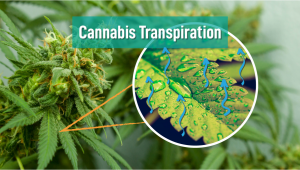
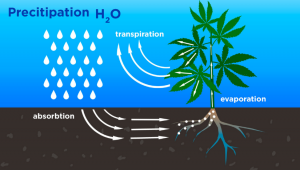
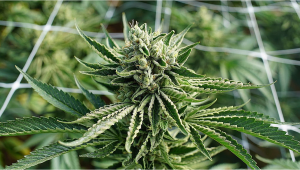
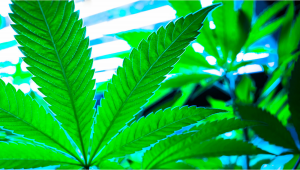


Comments